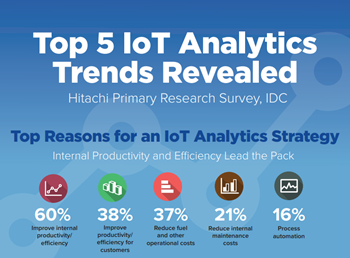You can't have failed to notice that the Internet of Things is everywhere these days. The IoT is set to be one of the biggest trends of the next few years, promising a revolution in everything from how we use energy to how we buy milk.
In 2009, there were around 900 million connected 'things' in use around the world, according to figures from Statista. Some time around 2007 (no-one can quite agree on exactly when) the number of devices on the planet surpassed the number of people, and by next year, that number is set to reach 20 billion.
And as new wireless connectivities such as 5G become more widely available - greatly increasing the amount of bandwidth available for IoT gadgets to use - we surely aren't far off a world where everything is connected, all the time. But how did we get here, and what's next for the ever-growing IoT industry?
When did the IoT start?
Given the amount of excitement generated by the IoT over the last year or so, you'd think it was the latest new thing - after all, we all know how the tech world loves its shiniest new innovations. But the concept itself has been around a lot longer, going back well before the term Internet of Things was first coined in 1999.
The first internet-connected device wasn't a self-driving car or a robot though - it was a Coke machine, which was installed at Carnegie Mellon University all the way back in the 1980s that could report its stock levels via the ARPANET, as it was known back then.
The idea of straightforward appliances that could take the hassle out of everyday life continued to be a major theme. Ten years ago, one example that seemed to crop up all over the place was the 'smart refrigerator' that could keep track of your groceries and automatically order more when you were running low. For years, a running joke in the tech world was that one day, even your toaster would talk to the internet, before of course, someone finally did it.
What can the modern IoT environment do?
Over the last couple of years, this desire for connectivity may have gone a little overboard, with everything from toothbrushes that can report back on your oral hygiene habits to juicers that connect to the internet and won't let you use outdated or recalled ingredients (that particular one got widely mocked after it was found to be no better than using your hands to squeeze its 'unique' ingredient pouches). But there are plenty of better ideas that actually could change the world.
The most obvious examples are things like self-driving cars, which rely on a whole range of IoT sensors to determine where they are and to spot obstacles, as well as home hubs like Amazon Echo and Google Home that can control lights, set your burglar alarm and manage your entertainment system. Indeed, as of 2018, more than 47 million adults in the US had access to a smart speaker, illustrating how they've become part of our everyday lives.
Outside the home, the technology is at the heart of the latest smart cities, monitoring everything from traffic flows to electricity use to spot trends, react to problems and improve efficiency on a wide scale. It's come quite a way from spotting when the Diet Coke was almost out of stock.
Learn more: 5 Ways IoT is Driving Successful Digital Transformation
Securing the future of connectivity
One area that will need much closer focus, however, is the matter of security. Over the last few years, many developers have been so preoccupied with adding connectivity to everything they can fit a circuit board into, they've overlooked who has access to it.
The result of this is that many IoT devices are worryingly easy to hack into. In fact, it's so simple even a sixth-grader armed with just a Raspberry Pi and a laptop can do it. Therefore, if the IoT is really going to deliver on its potential, improving the levels of protection on offer is a must.
There are plenty of scare stories about what hackers can do with insecure IoT devices, from creating botnet armies to hacking into connected cars as they drive at full speed down the freeway. And these fears may not be unfounded, as one 2018 survey revealed two-thirds of people (64%) who use IoT devices have reported problems with them.
It also showed 85% are concerned that self-driving cars will malfunction and lead to high-speed collisions, while 86% are concerned that digital locks will see them locked out of their cars and 83% are concerned about losing control of their smart home. Clearly, people need more reassurances.
As a result, IoT devices need to have security considerations factored in right from the earliest stages, avoid the use of weak default passwords, be able to encrypt data, and be kept separate from other networks and the public internet in order to ensure they have the security users expect in today's environment.
Access the latest business knowledge in IT
Get Access





Comments
Join the conversation...